Diego Olivero is a Guatemalan industrial designer renowned for his compelling visual narrative using handcrafted details, colour, texture, and sustainability. Having set-up this eponymous practice Diego Olivero Studio, he blends sustainability, modern design, and traditional craftsmanship in his work, with an emphasis on encouraging local artisans and preserving conserving craft techniques from Guatemala, Peru, Honduras, Haiti, Morocco, Mexico, and India.
He also founded Meso Goods, an outlet that advocates for fair wages and the economic empowerment of artisan families, in partnership with artisans from Latin America and other nations. In addition to being accepted into the Young Leaders of the Americas Initiative and earning medals at the London Design Biennale and World Biennale of Interior Designers, Diego has been recognised and honoured for his creative interpretations of regional heritage. Diego has innovated projects that are social design-driven as a result of his understanding of the effect that can be produced through design by exploring local techniques such as pedal loom, wool weaving, backstrap loom weaving, beading, recycled glass, wood carving, and glass blowing. In a conversation with STIR, he discusses his design philosophy and projects, embarking on a journey of modern designs created using traditional craftsmanship.
STIR: Take us through your journey as a designer and eventually building your brand.
Diego: My journey as a designer and building my brand began with my passion for industrial design and the creative environment I grew up in. Hailing from Guatemala, a country rich in artistic traditions, vibrant textiles, and captivating colours. This led me to embark on a creative career, working closely with local artisans and integrating their traditional techniques into my designs. Collaborating with artisans allowed me to immerse myself in their craft, gaining a deep understanding of their techniques, materials, and the cultural significance behind their work. I felt a profound connection to the heritage and craftsmanship of Guatemala, which became the driving force behind my brand's ethos, Meso Goods.
Building my brand involved crafting a collection of products that exemplified the fusion of traditional craftsmanship with contemporary design Each piece was meticulously designed and produced, incorporating the vibrant colours, intricate patterns, and skilled artistry that characterised Guatemalan culture. I placed a strong emphasis on creating products of exceptional quality, while also ensuring sustainable and ethical production practices.
Throughout my brand-building process, I remained committed to empowering the artisans and supporting their communities. Fairtrade practices, skill development programs, and providing fair wages and working conditions were integral components of my brand's mission. By investing in the artisans and their communities, I aimed to create a positive impact and contribute to their socioeconomic well-being.
Today, my brand and my design studio stand as a testament to the cultural blend of tradition and innovation. It has gained recognition both locally and internationally, becoming synonymous with ethical practices, innovative design, and a celebration of global artisanal craftsmanship.
STIR: Your work spans product, interior design and large-scale installation, what is a common design philosophy you follow?
Diego: My design philosophy is rooted in sustainable practices and a celebration of artisan techniques. Whether it's product design, interior design, or large-scale installations, I strive to incorporate and honour the traditional craftsmanship of different cultures into my work. By integrating artisan techniques, I aim to preserve cultural heritage while bringing a sense of authenticity and uniqueness to each project. I believe that by embracing these techniques, we can create designs that have a deeper connection to humans and reflect rich global cultures. I believe that design should be both functional and aesthetically pleasing. I strive to create designs that not only serve their intended purpose but also evoke emotional responses and enrich the experiences of those who interact with them. By merging form and function, I aim to create harmonious spaces and products that enhance our living environment. Overall, my design philosophy revolves around sustainability, celebrating artisan techniques, and creating purposeful and meaningful designs. It is a commitment to craftsmanship, cultural appreciation, and responsible design practices that shapes my approach to product design, interior design, and large-scale installations.
STIR: What incident/thought made you inclined towards social impact projects?
Diego: Growing up in Guatemala, I had the privilege of witnessing the remarkable craftsmanship and artistic traditions that permeate our culture. This firsthand experience influenced my perspective on design and innovation. I realised that as designers, we have a profound responsibility to contribute to a better world—a world that is more sustainable, inclusive, and equitable.
The intricate techniques and beautiful creations of the artisans I worked with sparked my passion for collaborating with communities and leveraging design to drive social impact. Witnessing the challenges faced by these artisans, such as limited opportunities and recognition, motivated me to use my skills and platform to make a positive difference. I firmly believe that design has the power to address social and environmental issues, create solutions that improve lives and promote a more sustainable future. This conviction, coupled with my admiration for the artisanal heritage of Guatemala, led me to pursue social impact projects.
By working with artisans and marginalised communities, I aim to empower them, preserve their cultural traditions, and provide opportunities for economic growth and self-sufficiency. I strive to create projects that not only have a positive impact but also celebrate the unique stories, skills, and perspectives of the individuals involved. Ultimately, my inclination towards social impact projects stems from a deep sense of responsibility to use design as a force for good. It is my way of contributing to a more just and sustainable planet, while also honouring the rich heritage of the artisans and communities that have inspired me along my journey.
STIR: What does the design process for your products involve?
Diego: The design process for my products is a dynamic and iterative journey that begins with an initial idea, a material exploration, or a client's specific needs. From there, it evolves into a creative process where I dive deeper into understanding the project requirements and the unique capabilities of the artisans I collaborate with. To create innovative and impactful designs, it is crucial for me to think outside the box and challenge traditional boundaries. This involves actively engaging with the artisans and working on-site, allowing for a co-creative approach. By collaborating closely with the artisans, I can tap into their expertise, gain insights into their techniques, and push the boundaries of what is possible.
During the design process, I continuously refine and iterate on the initial concepts. I explore different materials, experiment with various design elements, and consider factors such as functionality, aesthetics, and sustainability. It is essential for me to strike a balance between creating visually compelling designs and ensuring that the products serve their intended purpose effectively. Throughout the process, I place a strong emphasis on incorporating artisanal techniques and celebrating the cultural heritage of the community. I seek to preserve and promote these techniques, while also infusing a contemporary twist that resonates with the target audience. In summary, my design process involves ideation, understanding project needs, collaborating with artisans, pushing boundaries, iterating on concepts, and ultimately creating innovative and culturally significant products that meet both functional and aesthetic requirements.
STIR: What was the inspiration behind the Telar series?
Diego: The inspiration behind the Telar series was rooted in the traditional looms used in Momostenango, Guatemala. The process of setting up the loom and witnessing the intricate weaving techniques sparked the concept for this collection. To bring the Telar series to life, I collaborated with skilled artisans who specialise in wool weaving. The wool used in the collection is created entirely by hand, paying homage to the traditional methods passed down through generations. Additionally, I partnered with women artisans in Sabana Grande, Honduras, to add the finishing touches to each piece. They skillfully weave the wool into a metal structure that resembles the loom itself, creating a beautiful fusion of traditional craftsmanship and contemporary design. The Telar series encapsulates the essence of the loom, translating its linear and repetitive language, textures, and weaving techniques into functional and artistic pieces.
STIR: Luna Ixchel is an intriguing lighting design, what was your thought process behind it?
Diego: The thought process behind the Luna Ixchel lighting design was deeply influenced by the Mayan Goddess Ixchel, who is revered as the moon goddess in Mayan mythology. Drawing inspiration from her symbolism and the celestial realm, I set out to create a lighting installation that captured the essence of the moon's presence. The Luna Ixchel light installation is envisioned as a modern tapestry that combines traditional techniques with contemporary materials. Hand-spun wool, known for its warmth and natural texture, became the medium through which I sought to convey a sense of comfort and connection to the natural world.
To bring this vision to life, the wool is meticulously woven into a metal mesh structure, resulting in a delicate interplay between the softness of the wool and the industrial quality of the metal. The intentional use of hand-spun wool and the incorporation of artisanal techniques pay homage to the rich heritage of textile craftsmanship, while also infusing a contemporary touch. By combining elements of tradition and innovation, the Luna Ixchel lighting design aims to evoke a sense of wonder, mystery, and tranquillity. It invites viewers to immerse themselves in the captivating ambience created by the soft, diffused light that emanates through the interwoven wool.
STIR: What was the inspiration behind the Forma wall hanging?
Diego: The inspiration behind the Forma wall hanging stems from traditional basketry techniques in the Philippines, which involve weaving natural fibres. The Forma wall hanging takes a unique approach by utilising repetitive shapes positioned at different angles to create a three-dimensional piece. This design is achieved through the collective efforts of more than 50 artisans who collaborate to create these pieces. The pieces are then connected using dyed black fibres, adding a modern touch to the artwork. The contrasting natural colour of the fibres, along with the black edges, contribute to the wall hanging's aesthetic appeal. The black edges create a defined shape that adds depth to the piece when it is displayed on a wall. Additionally, the story behind the artisans involved in crafting the Forma wall hanging adds another layer of meaning and significance to the artwork.
STIR: Traditional craftsmanship is intrinsic to your work. How do you balance that with a minimal and modern approach?
Diego: Our approach to balancing traditional craftsmanship with a minimal and modern aesthetic revolves around a meticulous curation of elements, techniques, and materials. We carefully assess each aspect of our design, employing a selective process of adding and subtracting to achieve the desired balance. By employing these techniques, we infuse our designs with a sense of authenticity and cultural significance. This minimalist aesthetic allows for a sense of visual harmony and understated elegance. Furthermore, our material selection plays a crucial role in striking the balance between tradition and modernity. While we honour natural fibres and materials to maintain a connection to heritage, we also explore innovative textures and sustainable options. This enables us to create designs that feel both timeless and contemporary.
STIR: What considerations do you make, in terms of material and techniques, to make such sculptural designs?
Diego: When creating sculptural designs, we take several considerations into account regarding materials and techniques. Working closely with artisans provides us with a wealth of options in terms of techniques and materials, allowing for the exploration of diverse possibilities. The first step in our process involves carefully selecting the materials we wish to work with. We take into consideration the properties and characteristics of different materials, such as their texture, techniques, durability, and aesthetic appeal. This selection process is crucial as it sets the foundation for the overall design. To further develop our designs, we embark on development trips, collaborating directly with artisans. These trips allow for a deep understanding of traditional techniques and local craftsmanship. By co-creating with the artisans, we leverage their expertise and knowledge, blending it with our design vision to achieve unique and sculptural pieces. During this collaborative process, we experiment with various techniques that are inherent to the artisans' craft. By exploring the possibilities and pushing the boundaries of these techniques, we can create innovative and sculptural designs that showcase both traditional craftsmanship and contemporary aesthetics.
STIR: What is NEXT in store for you?
Diego: I'm incredibly thrilled about this venture of launching my own line of tufted rugs handcrafted in India. Collaborating with artisans in India and delving into traditional techniques has been an incredible journey of knowledge sharing. The launch of my tufted rug line offers an exciting approach to my design perspective while paying homage to the craftsmanship and cultural heritage of the artisans. Looking ahead, I'm eager to expand my product line and explore new collaborations with artisans from diverse regions. Embracing different traditions and techniques will allow me to create a collection that's globally inspired and culturally rich.
About Sabana Grande Collection - Sculptural Objects
The Sabana Grande Collection takes you on a journey through materiality sourced from the region of Sabana Grande, Honduras. Within this collection, a collective of skilled artisans collaborates under one roof working with clay, metal, stone, and wood. Inspired by the captivating surroundings of Sabana Grande, this collection captures the interplay between people, places, and cultures. As a result, each creation resonates with a sense of authenticity and artistic expression. Wood and iron emerge as the primary materials in the Sabana Grande Collection, symbolising the raw beauty found in the natural world. Meticulously crafted and thoughtfully designed, these pieces undergo a transformative journey. The wood is sculpted, carved and burned while the iron is skillfully welded, embodying the mastery of the craftsmen in the Central American Region.
Text by Ria Jha






 Sign in with email
Sign in with email


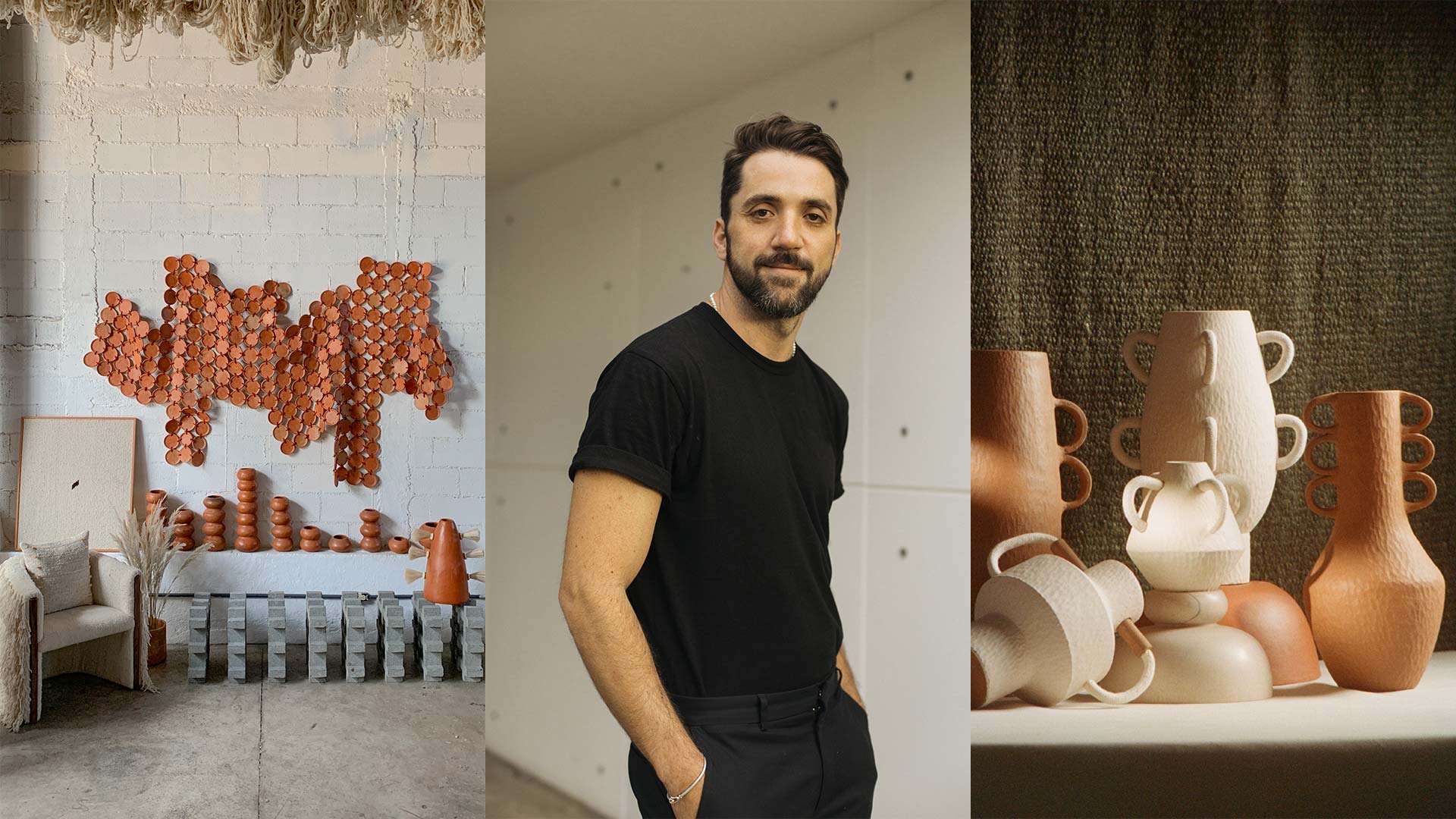
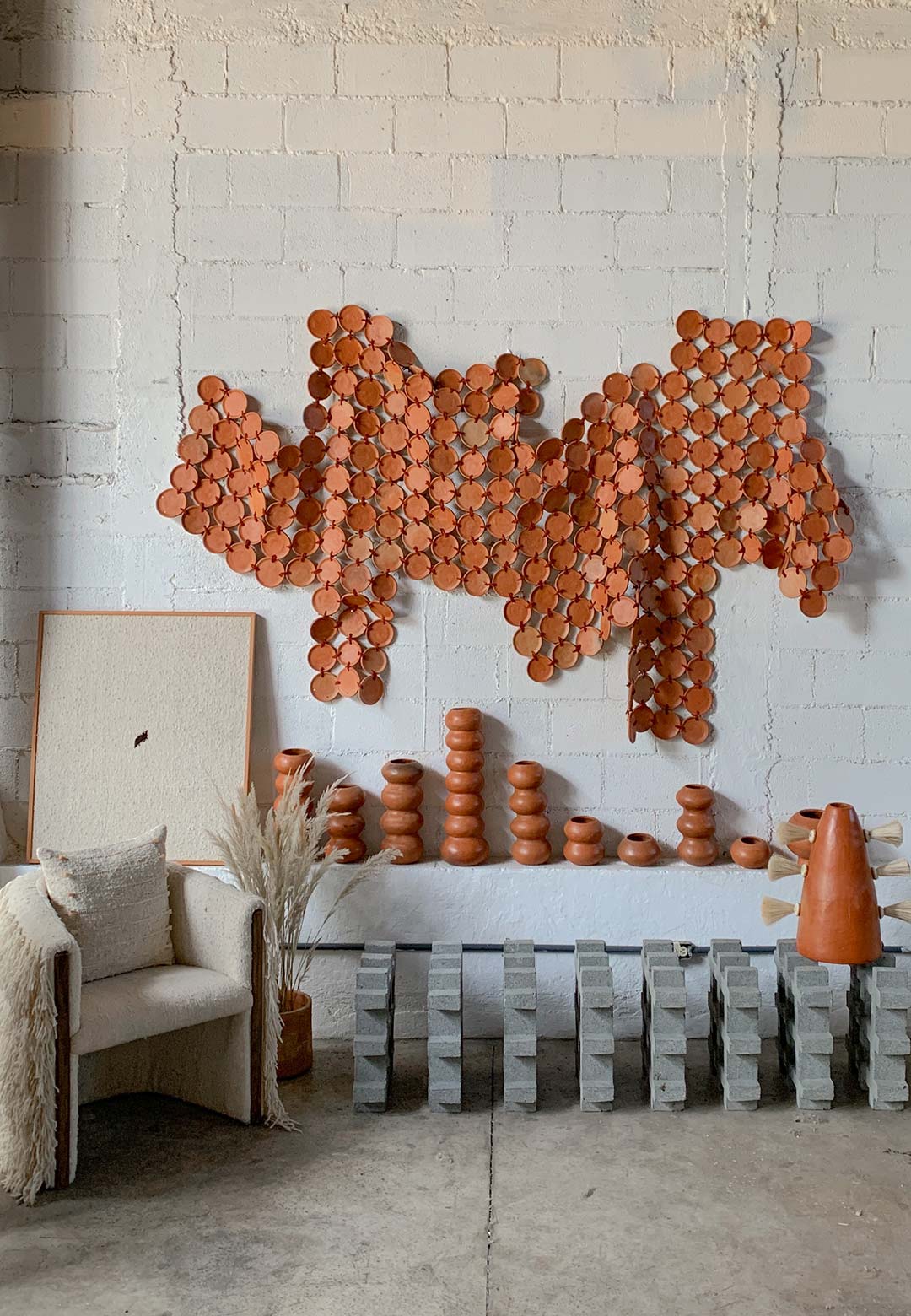
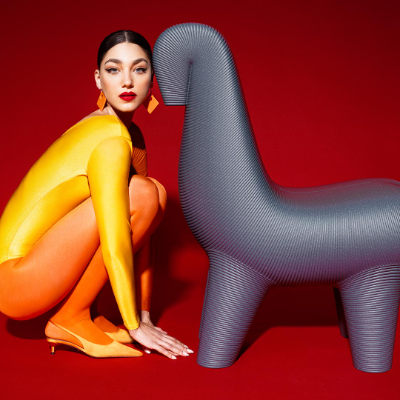
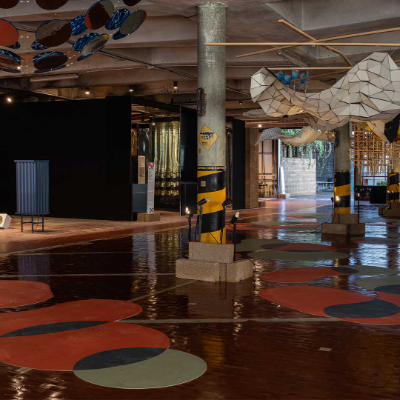
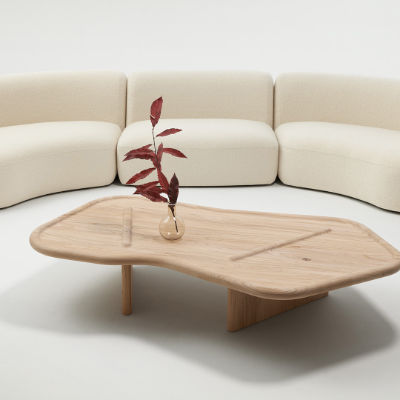
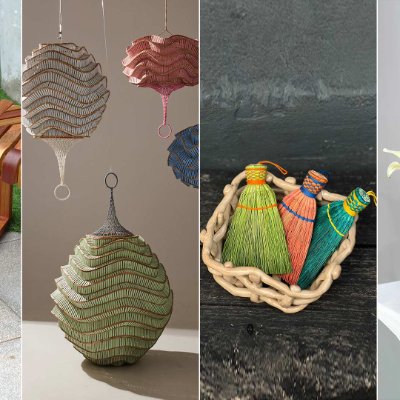
What do you think?